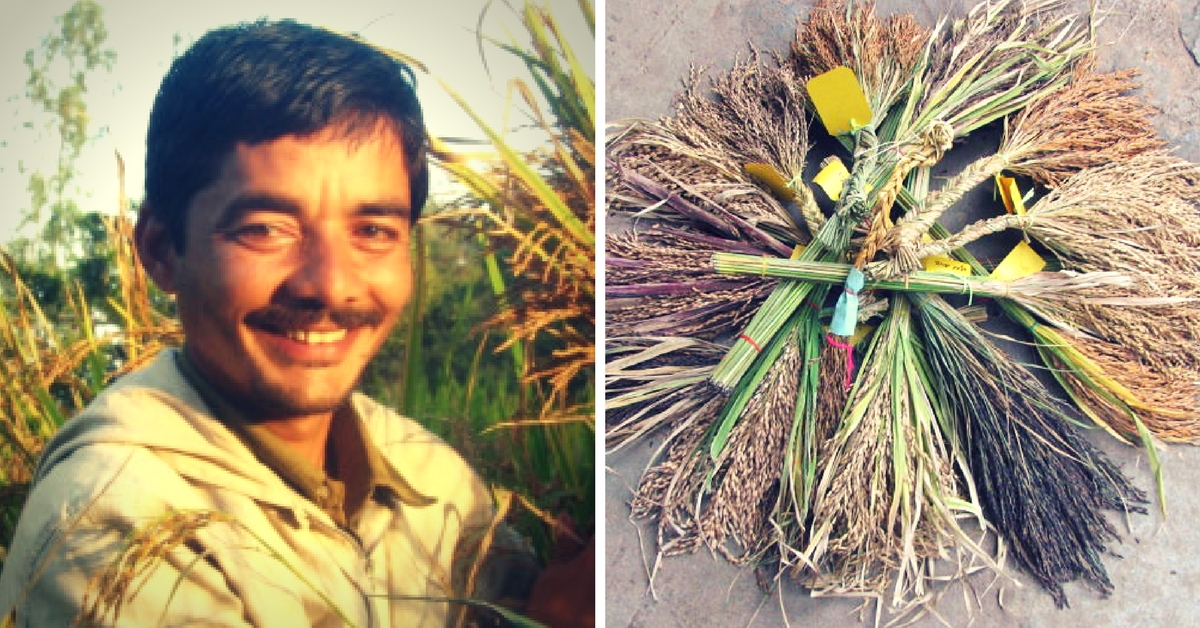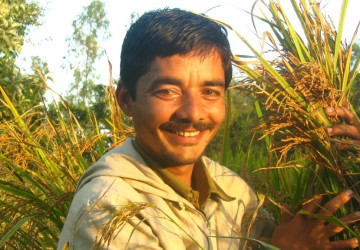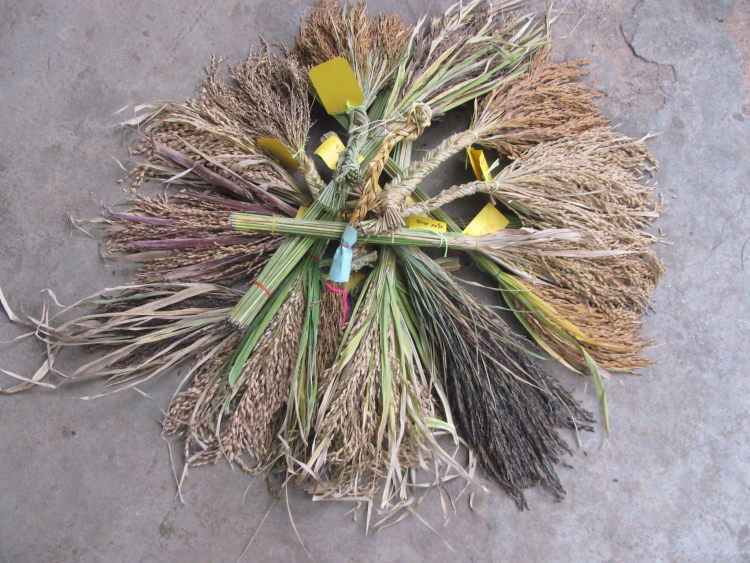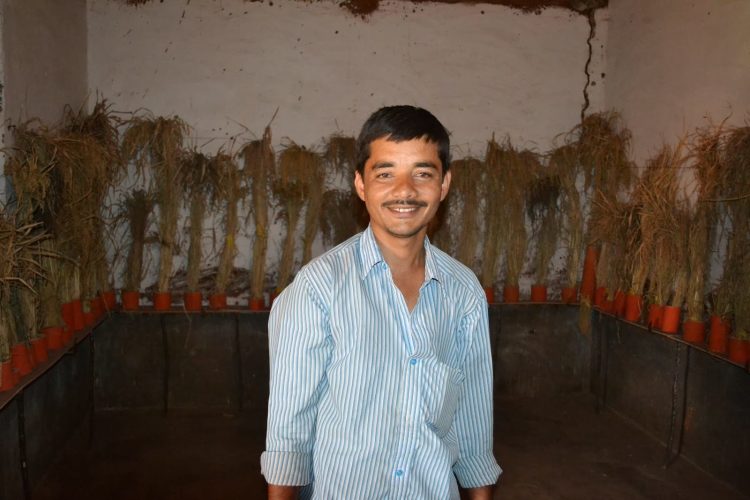Meet the Farmer behind the Living Agricultural Museum That Is Home to over 850 Varieties of Rice!
Syed Ghani Khan is a museum curator who resides in a small village in Mandya district. His initiative is a unique one --a living museum where over 850 varieties of rice and about 115 varieties of mangoes are being conserved and cultivated.

Syed Ghani Khan is a museum curator who resides in a small village in Mandya district. His initiative is a unique one -- a living museum where over 850 varieties of rice and about 115 varieties of mangoes are being conserved and cultivated. The farmer hopes to reintroduce the lost traditional varieties and bring back the lost wisdom of our ancestors to this generation of farmers.
A farmer’s son, Syed Ghani Khan’s had always dreamt of becoming a museum curator.
He studied archaeology and museology, dreaming of opening his own museum where he could host curious visitors and impart knowledge about several ancient traditions.
 In Pic above: Syed Ghani Khan
In Pic above: Syed Ghani Khan
When he was 22, Syed’s father had a brain haemorrhage, which left him in charge of the family and the farm as the eldest of the siblings. Syed took up farming and made up his mind to say goodbye to his dream forever.
He started using hybrid farming methods to grow rice like many other farmers in his district. One day, while spraying his crop with pesticides, he had a dizzy spell and fainted. That was the day when realisation hit him.
“People call us farmers ‘anna daata’ (provider of food). But that day I realised that I am not anna daata; I have become visha daata (someone who feeds poison). With all these fertilisers and pesticides, I am growing nothing other than poisonous food. That was when I decided to change my ways,” says Syed.
He began using organic compost, but after a few months, he saw no visible effect on his crop. When he looked into the matter, he realised that the crop grown from hybrid rice seeds wasn’t affected by the natural fertilisers at all. He then decided to switch to the more nutritious local traditional rice varieties that would suit the traditional cultivation methods.
When he tried to find the traditional varieties, however, he realised that many of the drought-resistant rice varieties of the once dry region, like raja bhog batha, kadi batha and doddi batha, were lost. After the introduction of hybrid seeds that offered much higher yield than the traditional seeds but could not reproduce, farmers had abandoned the traditional varieties, which would provide comparatively low yield, but whose seeds could be used for generations after. Syed struggled to find these traditional seeds that were also naturally resistant to pests.
His collection started with a rice variety that no one was able to recognise. A scientist helped him identify it as a native variety of rice that used to grow a long time ago in Mandya but had since been lost.
“I felt concerned, you see! I had heard of so many different varieties while growing up in a farmer family, and now when I wanted to cultivate these varieties, I was finding out that they no longer exist? Something needed to be done about this,” says Syed.
He started tracing these lost varieties of rice, collecting, conserving and even cultivating them.
 In Pic above: Different varieties of rice
In Pic above: Different varieties of rice
That was when the thought of realising his dream of becoming a museum curator occurred to him, by creating a unique living Rice Museum.
He found a handful of rice varieties in the nearby villages of Mandya district but didn’t stop at that. He travelled to the neighbouring districts and states in search of the rice varieties. Within a span of 4 years, he had collected, grown and conserved over 140 unique rice varieties, retaining the unique taste, aroma, colour, size and shape of each variety.
The traditional varieties have many advantages over the hybrid ones.They require less water. Some even have medicinal properties.
“The naturally grown rice varieties have adapted to different climatic conditions and therefore can withstand disasters like floods and droughts that usually destroy the hybrid crop varieties. I select the best of seeds and every year I plant, grow and multiply these seeds to share those with farmers. I am trying to educate the farmers about the importance of these traditional varieties. I don’t give my seeds to big seed companies even when they offer a lot of money,” he says.
After years of perseverance, Syed is now well known among the farmers, who actively seek his advice.
 Pic above: Syed is the proud curator of his museum.
Pic above: Syed is the proud curator of his museum.
Located in the Kirugavulu village of Mandya district, Syed’s Rice Museum as well as the ‘Bada Bagh’, an orchard renowned for growing over 116 varieties of mangoes, have become must-visit spots for farmers as well as agricultural researchers. His rice museum boasts of more than 850 indigenous rice varieties from all parts of the country.While most of the varieties of rice originate from India, the museum is also home to varieties from Myanmar, Thailand, Pakistan and several other parts of the world. Syed has transformed the farm into a bio-diverse ecosystem, which is host to over 60 species of birds. Maintaining this living museum and perpetuating the lost knowledge to the future generations is his only passion.
Also read: TBI Women: Sowing The Seeds Of Change – Sustainable Agriculture Driven By Women In West Bengal
Syed Ghani Khan has started a fundraiser for his rice museum. To support his cause, click here.
Like this story? Or have something to share? Write to us: [email protected], or connect with us on Facebook and Twitter.
NEW: Click here to get positive news on WhatsApp!
If you found our stories insightful, informative, or even just enjoyable, we invite you to consider making a voluntary payment to support the work we do at The Better India. Your contribution helps us continue producing quality content that educates, inspires, and drives positive change.
Choose one of the payment options below for your contribution-
By paying for the stories you value, you directly contribute to sustaining our efforts focused on making a difference in the world. Together, let’s ensure that impactful stories continue to be told and shared, enriching lives and communities alike.
Thank you for your support. Here are some frequently asked questions you might find helpful to know why you are contributing?


This story made me
-
97
-
121
-
89
-
167













